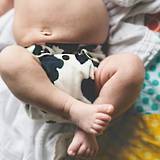Shop
02309
https://www.under5s.co.nz/shop/Hot+Topics+Articles/Health+%26+Wellbeing/Cleaning+tips+for+kids+with+asthma+and+allergies.html
Cleaning tips for kids with asthma & allergies
|
You might not realise, but all sorts of asthma and allergy triggers can accumulate in your home, especially house dust mites and mould. Check out these handy spring-cleaning tips to help reduce the impact of these common triggers at your place.
|
You might also be interested in ...
Baby poo guide
Baby poo and understanding what’s in babies’ nappies always seems to be a hot topic amongst new parents! It’s hard not to notice how much baby poo varies from nappy change to nappy change. Find out what’s normal and what’s not, the difference between breastfed and formula fed babies’ poo and starting on solids.
Enrolling newborns with a GP
Recent policy changes mean that newborn babies can now be enrolled with their GP soon after birth. An established relationship with a primary health care provider is a critical factor in children receiving essential healthcare and the timely delivery of immunisations.
join usJoin us on social media for all our latest news. |
sign upSign up and receive our latest newsletters. |
|







Cleaning tips for kids with asthma & allergies
Here are some cleaning tips to help reduce the impact of these common allergic asthma triggers in your home.
1. Wash sheets and pillowcases weekly in water hotter than 55°C.
2. Remove your child's soft toys from their bedroom or wash weekly in water hotter than 55°C.
3. Open curtains and air bedding in the sunshine and give them a regular clean.
4. Consider venetian blinds or flat blinds, which are easier to clean that heavy curtains. External shutters are another option.
5. Cover your child's mattress, quilt and pillows with dust mite-resistant encasings.
6. Use a damp or electrostatic cloth to dust hard surfaces (including floors).
7. Ensure your child isn’t in the room while, or immediately after, you do the vacuuming, as this increases allergens in the air for up to 20 minutes.
8. Keep all rooms dry and well ventilated.
9. Clear out the clutter around your house.
10. Consider house dust mite measures when building or renovating.
8 Cleaning tips to avoid mould in your home
1. Remove visible mould with bleach or other mould reduction cleaners.
2. Using high-efficiency air filters – these may be integrated in air-conditioning, heat-recovery ventilation systems, or in stand-alone air purifiers.
3. Ensure adequate natural ventilation including the use of extractor fans.
4. Seal leaks in bathrooms and roofs.
5. Clear overflowing gutters and blocked underfloor vents.
6. Remove indoor pot plants (which promote mould growth).
7. Drying or removing wet carpets.
8. Treating rising damp as soon as it is detected. Avoid the use of organic mulches, and compost heaps.
Why it's important to clean your home
You might not realise, but all sorts of asthma and allergy triggers can accumulate in your home, especially house dust mites and mould.
Allergy occurs when a person’s immune system reacts to substances in the environment that do not bother most people.
These substances are known as allergens and are found all around us.
Even though complete allergen avoidance will not cure asthma, reduced exposure to allergen triggers may lead to improved control of your child’s asthma and reduce the need for medication.
House dust mites are a very common allergic trigger for asthma in New Zealand.
These microscopic creatures feed off skin scales, and thrive in temperate and humid climates such as coastal areas.
Whereas exposure to indoor and outdoor areas that are damp and have mould may also trigger asthma symptoms in some people.
More information
If you would like more information or are concerned in any way about your child's asthma or allergies, your GP/pharmacist can help identify what your child is allergic to and show you how to avoid allergy triggers.
More kids asthma articles to enjoy:
Source: The Asthma and Respiratory Foundation’s Sensitive Choice® programme - helping you identify asthma and allergy-aware products.